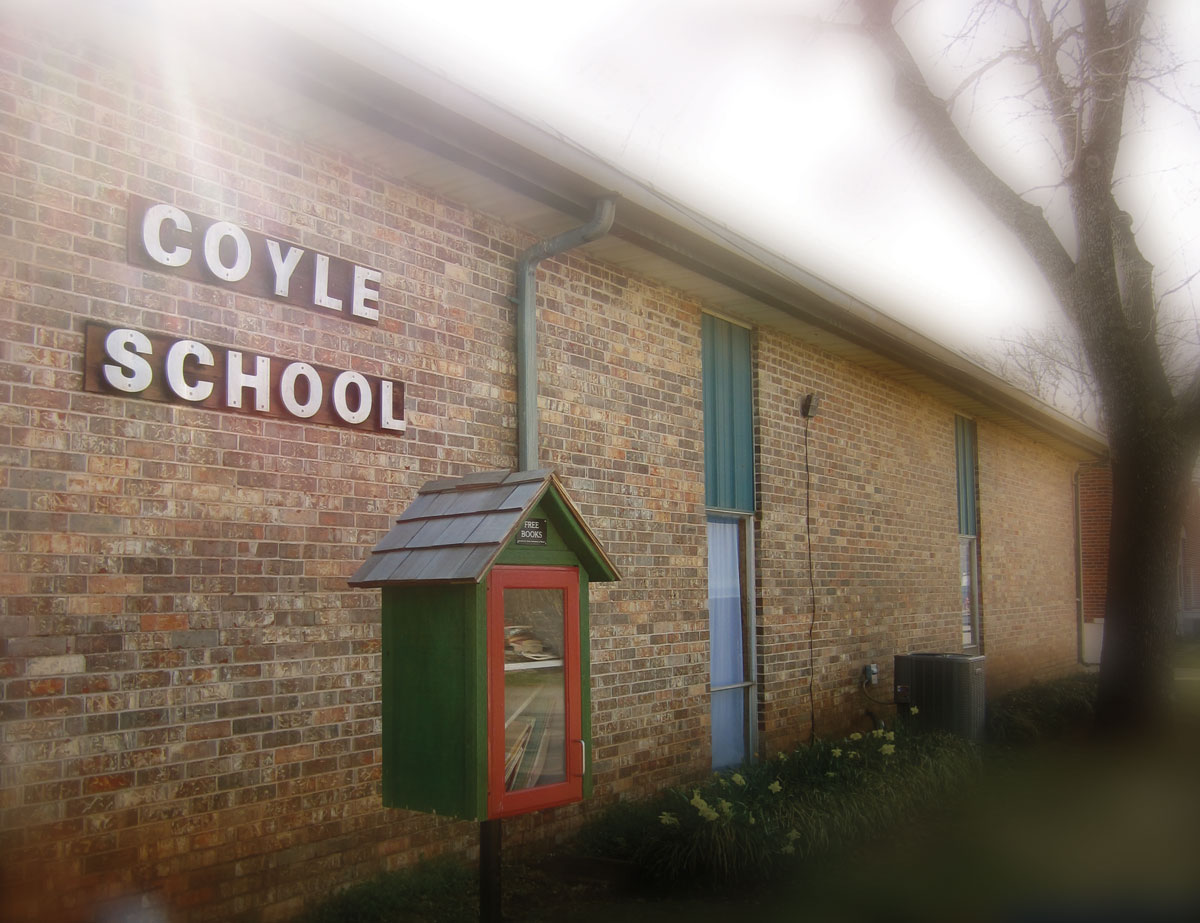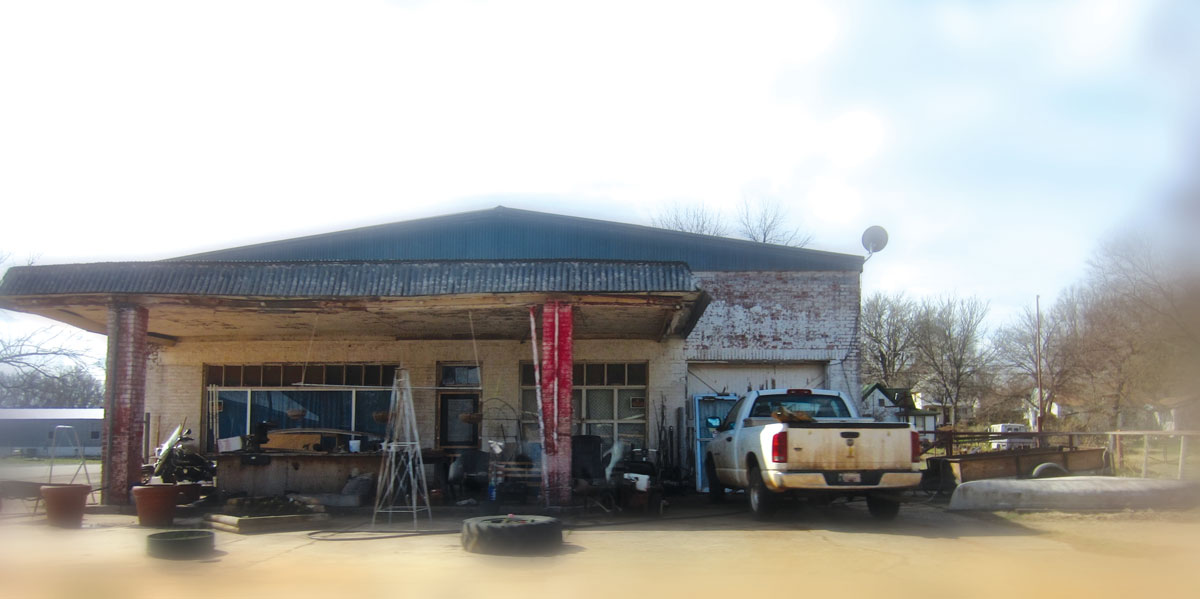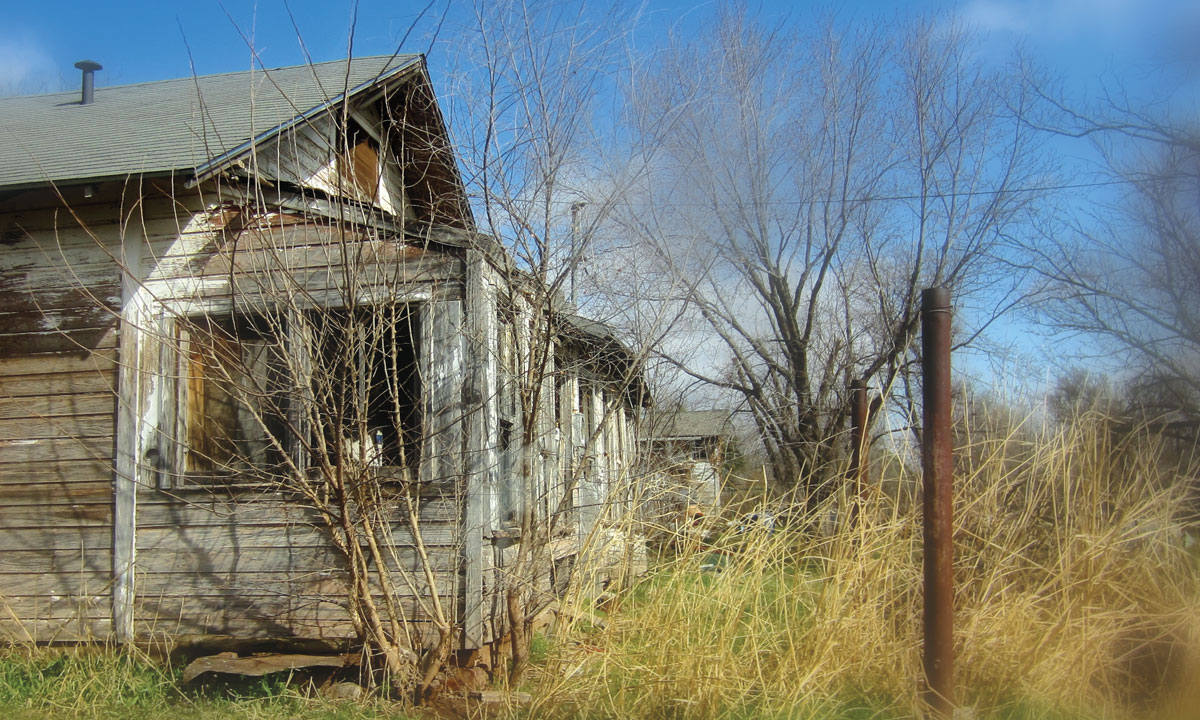Raising Quality of Life Through Community Partnerships
Monday, November 9, 2015

From Concept to Reality
“I had the idea to leverage the resources and expertise of faculty and students at OSU to help a high-poverty community addresses its challenges,” says counseling psychology professor John Romans.
Romans approached faculty colleagues Hugh Crethar (counseling) and Julie Croff (health education and promotion) about a pilot project. Fae Frederick, a doctoral student in the counseling psychology program, and Tonya Hammer, another counseling faculty, joined the group.

School administration professor Ed Harris suggested visiting with Josh Sumrall, a doctoral student in the school administration program who is the superintendent for Coyle Public Schools. Located about 20 miles west of Stillwater in Logan County, the school district serves Coyle, Meridian and Langston in a high-poverty area with roughly 300 students in pre-kindergarten through 12th grade. Sumrall welcomed the assistance.
Beginning the Work
The OSU team met with school district personnel to discuss a list of initial targets to benefit the school and community — parental education and involvement, health initiatives, job/entrepreneurial training, after-school programs, electives (art, music and drama) and more.
Currently, the group is conducting a community needs assessment and developing a town hall discussion with community leaders and citizens to ask for feedback.
“These (projects) will help us gather data to better serve the community,” Frederick says.

Like many districts, Coyle is challenged with low funding and large class sizes, Sumrall says. Just one counselor serves all of its students. She is also the district’s testing coordinator and handles college preparation, guiding students through admission, scholarship applications and more.
To assist the counselor, Crethar, an associate professor in the College of Education’s counseling program, has assigned two interns from the community counseling master’s program to work 20 hours a week in Coyle as part of a practicum experience.
“Guidance lessons for the K-12 students has gone from one time a month to now once a week. Those lessons have been targeted to meet both academic and career needs,” Crethar says.
The OSU interns have also created small groups to cover study skills, organization and concerns identified by the students. In addition, a career fair was developed for the high school grades that do not have to take standardized tests. The counseling interns’ impact will be evaluated as part of the project’s research.
The school’s foundation raised funds to construct a greenhouse. The OSU team includes Jon Ramsey (agricultural education), who is consulting with Coyle’s agricultural teacher, Bailey Platt, an OSU graduate. The team has identified several grant opportunities and submitted grant applications to Whole Foods and OSU Extension to help sustain and further the garden initiative. Food grown in the garden could be sold to the community or used by the cafeteria, Sumrall says. The food source could be tremendously important to an area that lacks grocery stores and restaurants.
Efforts are also being made to help Coyle upgrade its technology. About five years ago, Coyle became a one-to-one laptop district for grades seven through 12. Susan Stansberry and Toby Brown with the education technology program have made recommendations about replacement devices and identified grant opportunities to help cover the cost.

Charting the Course
Members of the OSU team and Sumrall meet regularly to discuss progress and make plans. The “roundtable discussions” have proven to be great brainstorming sessions.
What started with a core of faculty in the College of Education has expanded to include colleagues from the Colleges of Human Sciences, Arts and Sciences and Agricultural and Natural Resources. Tamara Mix from Sociology is consulting on the needs assessment, and a graduate student from the sociology department is also working on the project. College of Education grants specialist Tim Schlais is lending his expertise as well.
The project uses community-based participatory research models to design and evaluate initiatives and outcomes. Data will be gathered continuously to develop guidelines for future partnerships as well as details on outcomes that can be used to apply for funding to sustain, further and create new initiatives. Initiatives require the support and participation of community members to ensure they can be sustained with or without OSU support.
“The partnership is meant to foster the community’s sense of togetherness and encourage community members to participate,” Romans says.
“(This project) is certainly helping in the short term, but I believe the long-term payoff will be tremendous,” Sumrall says. “We have a vision for our community to come closer together. I’m so grateful that OSU has taken us under its wing. I can’t say thank you enough.”
To learn more about the Building Resilient Communities project visit education.okstate.edu/osubrc.
